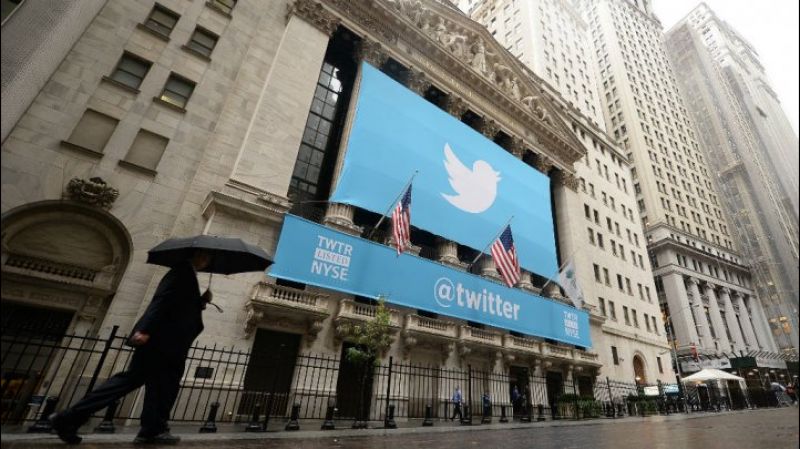Hashtag Stock Market Boost
Twitter is a powerful investor relations tool for public firms, and levels the playing field for the small fry

- In 2013, when the U.S. Securities and Exchange Commission allowed companies to use Twitter to disclose financial information, tweeting became less sensational and more valuable to investors.
- Smaller public firms can benefit from tweeting by ensuring more investors receive information about their financials.
- Tweeting can also lower the cost of capital for companies.
Mohamed Al Guindy is a fairly modest user of the micro-blogging site Twitter. “I actually don’t go on Twitter that much,” says the Smith School of Business doctoral student rather sheepishly. “I have under 20 followers.”
That’s a rather surprising admission considering Al Guindy has spent the past several years tracking the behaviour of corporations on Twitter, writing elaborate computer programs that allow him to scrutinize how they use the social media tool to announce financial results and how the market reacts.
His findings reveal that when a firm tweets, investors listen.
“I built a small lab here in my office at Queen's where I have multiple computers constantly collecting data from social media to be used in my future research,” says Al Guindy, who draws heavily on his background in computer engineering to design his programs and crunch data.
He tracks all firms publicly listed on the New York Stock Exchange, Nasdaq, and American Stock Exchange. “I collect millions of tweets. My work looks at how companies tweet, what times they tweet, what sort of information they tweet, and how markets react to the tweeting.”
Dialling Back the Hype
As part of his research, Al Guindy examined the effect of the April 2013 ruling by the Securities and Exchange Commission (SEC) that firms could tweet out financial information. Once they were permitted to do so, he found that tweets went from being full of hype to more informative.
“It made companies tweet out better information,” he says. “They knew regulators were watching. It raised the bar for companies, and made them pay more attention to their tweets.”
The new regulations suddenly legitimized Twitter’s value for both investors and firms, Al Guindy says. Plus, it forced more firms onto Twitter to ensure they remained competitive. This increased the volume of Twitter players, further heightening the quality of the tweets.
Gone were self-congratulatory — and hyperbolic — social media posts like the one Al Guindy cites from Netflix CEO Reed Hastings in 2012:
“Congratulations to Ted Sarandos and his amazing licensing team. Netflix monthly viewing exceeded 1 billion hours for the first time ever in June…Ted, we need even more!”
This post caused Netflix stock to soar 20 percent, and prompted the SEC to take a hard look at the social media practices of major corporations. It’s no surprise that by 2013, new regulations had emerged.
Following the SEC announcement, Al Guindy says, companies began to use Twitter more strategically, emphasizing good financial news on their official Twitter accounts when they knew investors would be watching, and burying poor results on Friday afternoons of long weekends.
“When companies tweet negative information, they do so at times of low investor attention,” he says, or when they know investors cannot act on it, such as in short-sell situations.
The overall effect is that investors now react more to the tweets themselves. “It became a mainstream official channel after regulation,” says Al Guindy, adding there is now much more market activity after a firm tweets.
Twitter in the Comms Toolkit
Though Al Guindy finds that the more Twitter followers a firm has, the bigger the market impact of their tweets, he has also discovered that tweeting can level the playing field for smaller firms with less-advanced social media teams and fewer resources to devote to disseminating financial information.
“Prior to the advent of Twitter, firms used newswires to communicate information to markets,” he says. But press releases are often glossed over by reporters, with only the results from larger players’ covered in the media.
With Twitter, and ideally in tandem with a press release, smaller companies can get more media coverage and more financial information out to investors, says Al Guindy.
“When they tweet, they can get some coverage out there that would help them more than larger companies,” says Al Guindy. “There’s a direct connection now between companies and markets.”
“When companies release more financial information, they also reduce their cost of capital”
He also delves into the savings associated with smaller firms using Twitter.
“When companies release more financial information, they also reduce their cost of capital,” he says. “And that’s what I find for those smaller companies.” He finds that the cost of equity reduction ranges from 10 to 30 basis points.
Al Guindy says that in addition to smaller firms who can use social media to their advantage, certain sectors that have traditionally been more reticent to do so can also induce market movement — reducing the cost of their capital — with more tweets. Although technology firms are all over social media, mining and petroleum firms could stand to tweet more.
And as for those companies slow to adopt social media practices, taking to Twitter can help them stay in the game.
“Something like 60 percent of companies right now are using Twitter,” says Al Guindy. “Investors are looking at it. Companies need to acquire more followers.”
— Anna Sharratt





